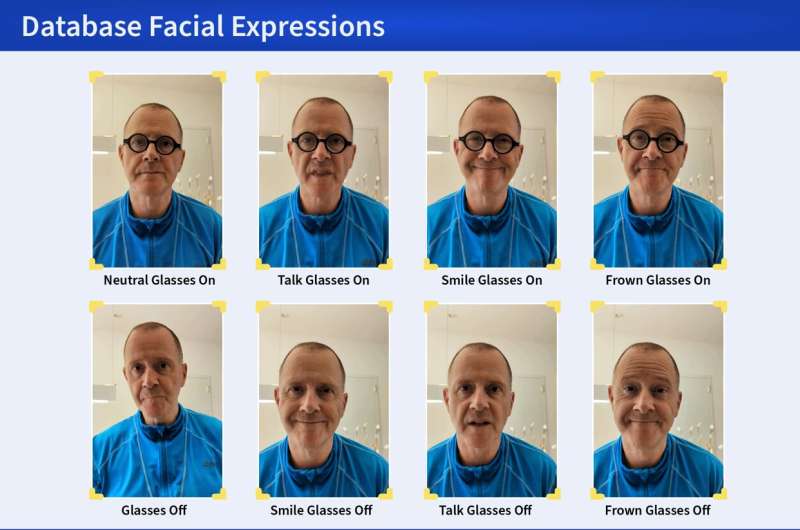
MAY 30, 2024 by National Institute of Standards and Technology
Collected at : https://techxplore.com/news/2024-05-results-age-software.html
A new study from the National Institute of Standards and Technology (NIST) evaluates the performance of software that estimates a person’s age based on the physical characteristics evident in a photo of their face.
Such age estimation and verification (AEV) software might be used as a gatekeeper for activities that have an age restriction, such as purchasing alcohol or accessing mature content online.
Age estimation has become an enabling technology in age assurance programs recently included in legislation and regulation both inside and outside the United States. These programs aim to permit only those in certain age groups to access social media chat rooms or to buy certain products both online and in the physical world and can be an important part of efforts to protect children online.
The new study, “Face Analysis Technology Evaluation: Age Estimation and Verification (NIST IR 8525),” evaluates the performance of six algorithms that developers provided voluntarily in response to a September 2023 call for submissions. According to Kayee Hanaoka, one of the study’s authors, the results show algorithms with varying capabilities.
“There is a wide range in performance among these algorithms, with room for improvement across the board,” said Hanaoka, a NIST computer scientist. “This is a partial snapshot of the age estimation field as it stood in late 2023, but as AEV performance is closely tied to advancements in artificial intelligence, we expect the field to change rapidly.”
The new study is NIST’s first foray into AEV evaluation in a decade and kicks off a new, long-term effort by the agency to perform frequent, regular tests of the technology. NIST last evaluated AEV software in 2014.
At the time, Hanaoka said, there was far less interest in the technology, and the evaluation was a one-time effort. That test used a single database of about 6 million photos taken from visa applications and required algorithms only to provide an age estimate on each photo.
Times have changed over the ensuing decade. Face analysis software has become sufficiently important that NIST has split its face recognition program into two tracks, one that evaluates algorithms’ ability to identify people (face recognition technology evaluation, or FRTE) and another that evaluates the ability to measure aspects of a face (face analysis technology evaluation, or FATE). The new test is part of the FATE track, which also has evaluations dedicated to detecting photo spoofs and measuring image quality.
NIST’s new test expands its photo collection to about 11.5 million photos from four diverse databases, all from U.S. government sources: the visa collection used in 2014, augmented by a set of FBI mug shots, a set of webcam images obtained at border crossings, and a set of immigration application photos of people born in more than 100 countries.
The photos from the databases differ in image quality and reflect a variety of ages, genders and regions of origin. All data was anonymized, and the research was reviewed to protect the rights and privacy of the photographed subjects.
The test again evaluated algorithms on their accuracy at age estimation, but in response to software developers’ requests, the test also asked the algorithms to specify whether the person in the photo was over the age of 21. The test was a “closed box” study, in which NIST researchers analyzed only the algorithms’ end performance, not their inner workings or how they arrived at their results. NIST makes no recommendations on whether the software is fit for particular use cases.
Hanaoka said that the report offers a few initial findings:
- There is no single standout algorithm, and a given algorithm’s accuracy is influenced by image quality, gender, region of birth, the age of the person in the photograph, and interactions among these factors. The algorithms all have their own sensitivities with certain demographic groups; an algorithm that performs well on certain groups can perform poorly on others.
- Unsurprisingly, AEV software has improved in the decade since the previous report. When making age estimates on the common database of visa photos (which was used in 2014 as well as in the current study), the algorithms’ mean absolute error has decreased from 4.3 to 3.1 years. Five of the six algorithms outperform the most accurate algorithm submitted in 2014.
- Error rates were almost always higher for female faces than for males. This was also true for the algorithms evaluated in 2014, but the underlying reasons are unknown.
The testing program is designed to be ongoing, and the study authors are accepting new algorithm submissions on a rolling basis. The team plans to release updates to this first round of results on its website once every four to six weeks, Hanaoka said.
“We anticipate rapid change in the AEV software field, and we intend to update and expand our test methods in the near future,” she said. “We plan to ask the algorithms to answer additional questions, such as whether better performance is possible if a prior photo of the same person is available. We also are planning to expand and diversify the databases of photos as well to better cover applications like online safety.”
All updates will be available on NIST’s AEV project website, and interested parties can receive status updates by emailing frvt-news+subscribe@list.nist.gov.
More information: Kayee Hanaoka, Face Analysis Technology Evaluation: Age Estimation and Verification, (2024). DOI: 10.6028/NIST.IR.8525

Leave a Reply